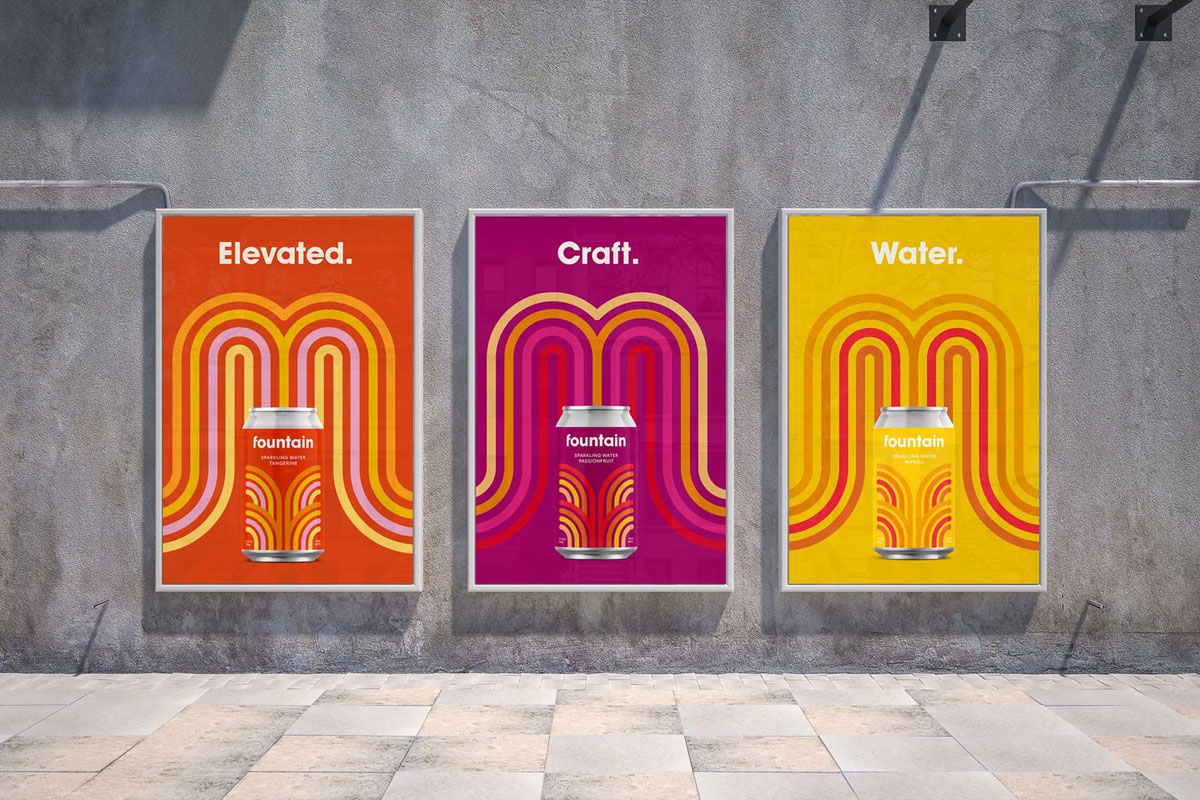5 Stages of the Design Thinking Process Explained

[01]
blog info
The best products don't happen by accident. They come from a structured process that puts people first, challenges assumptions, and tests ideas before committing resources.
That process is design thinking. A framework used by companies like Apple, Airbnb, and IDEO to solve complex problems through user-centred innovation.
Design thinking isn't magic. It's a repeatable method for turning messy challenges into elegant solutions. Five stages. Clear steps. Proven results.
Here's how it works and why it matters for anyone building products, services, or experiences.
What Is Design Thinking?
Design thinking is a problem-solving approach that prioritises understanding people before designing solutions. Instead of starting with features or technology, you start with empathy. What do users actually need? Where do they struggle? What would make their lives better?
The framework structures creativity. It gives teams a process for generating ideas, testing assumptions, and iterating toward solutions that work in the real world.
Design thinking works because it:
- Reduces risk (you test ideas before building)
- Increases relevance (solutions match actual user needs)
- Encourages collaboration (cross-functional teams work together)
- Drives innovation (constraints spark creative solutions)
It's particularly valuable when tackling ambiguous problems where the right answer isn't obvious. When user needs are unclear, when markets are changing, when you're entering new territory.
Why Design Thinking Matters
Traditional product development often starts with a solution and looks for problems to solve. Design thinking flips this. You start with the problem, deeply understand it, then design solutions that actually address root causes.
This approach prevents common failures:
- Building features nobody wants
- Solving the wrong problem
- Creating complexity instead of clarity
- Ignoring user behaviour and context
By following a structured process, teams make better decisions faster. You spend less time debating opinions and more time testing with real users. Data replaces assumptions. Feedback guides iteration.
Companies that use design thinking consistently report:
- Higher customer satisfaction
- Faster time to market
- Lower development costs (fewer failed projects)
- Stronger team alignment
The framework works across industries. Product design, service design, business strategy, organisational change. Anywhere you're solving problems for people, design thinking applies.
The 5 Stages of Design Thinking
Stage 1: Empathise
Everything starts with understanding people. Not what you think they need. What they actually experience, struggle with, and want.
Empathy is research. Structured observation and listening designed to surface insights you can't get from surveys or analytics alone.
Methods for building empathy:
User interviews: One-on-one conversations exploring behaviours, motivations, and pain points. Ask open questions. Listen more than you talk. Probe for specifics.
Contextual inquiry: Watch users in their natural environment. How do they actually use your product? Where do they get stuck? What workarounds have they created?
Journey mapping: Document the full user experience from start to finish. Every touchpoint. Every emotion. Every friction point.
Participatory research: Involve users in the design process. Co-creation workshops. Diary studies. Have them show you their world.
The goal isn't collecting data. It's developing genuine understanding of user needs, contexts, and constraints.
What good empathy research uncovers:
- Unmet needs (gaps in current solutions)
- Workarounds (signals of broken processes)
- Emotional responses (what frustrates or delights users)
- Context (where, when, and why people use products)
- Mental models (how users think about problems)
Don't just talk to existing customers. Interview people who don't use your product. Understand why. Study adjacent behaviours. Look for patterns across different user groups.
Empathy research should challenge your assumptions. If you're not surprised by what you learn, you haven't dug deep enough.
Stage 2: Define
You've gathered insights. Now synthesise them into a clear problem statement.
Defining the problem is harder than it sounds. Most teams rush this stage. They think they already know the problem. They're usually wrong.
A good problem statement:
- Centres on users (not business goals or technical constraints)
- Is specific (not "improve the experience" but "reduce checkout abandonment for mobile users")
- Identifies root causes (symptoms vs actual problems)
- Creates focus (narrows scope to what matters most)
How to define the problem:
Analyse your research. Look for patterns. What themes emerged across interviews? What pain points appeared repeatedly? Where do user needs conflict with current solutions?
Create user personas. Not demographic profiles. Behavioural archetypes based on goals, motivations, and contexts. What drives different user groups? How do their needs differ?
Write problem statements using this format:
[User type] needs a way to [user need] because [insight from research].
Example: "Mobile shoppers need a way to complete purchases in under 60 seconds because they're often interrupted and abandon long checkout flows."
Test your problem statement. Does it resonate with users? Does it align with research insights? Is it actionable?
The define stage creates alignment. Everyone on the team should agree on what problem you're solving before moving forward. No alignment here means wasted effort later.
Stage 3: Ideate
Now you generate solutions. Lots of them. Without judgment. Without constraints (yet).
Ideation is structured brainstorming. The goal is volume and variety. Get as many ideas out as possible. Wild ideas. Conservative ideas. Ideas that seem impossible.
Ideation techniques:
Brainstorming: Classic group ideation. Set a timer. Generate 50+ ideas in 30 minutes. No criticism. Build on others' suggestions.
Worst possible idea: Intentionally generate terrible solutions. This often sparks creative thinking by removing pressure to be "right."
SCAMPER method: Modify existing solutions. Substitute. Combine. Adapt. Modify. Put to other uses. Eliminate. Reverse.
Crazy 8s: Fold paper into 8 sections. Sketch 8 different solutions in 8 minutes. Forces rapid iteration and prevents overthinking.
How Might We questions: Reframe problems as opportunities. "How might we reduce checkout steps?" "How might we build trust with first-time buyers?"
Rules for effective ideation:
- Defer judgment. No "that won't work" or "we tried that." Evaluation comes later.
- Encourage wild ideas. Breakthrough solutions often start with seemingly impossible suggestions.
- Build on others. "Yes, and..." not "No, but..." Combine ideas. Remix concepts.
- Stay focused. Keep the problem statement visible. Tangents happen. Redirect gently.
- Go for quantity. More ideas increase the chance of finding great ones. Aim for 50+ concepts minimum.
After ideation, cluster similar ideas. Look for themes. Identify which concepts address the core problem most directly.
Then evaluate. Use criteria like:
- Feasibility (can we actually build this?)
- Desirability (do users want this?)
- Viability (does it make business sense?)
Narrow to 3-5 concepts worth prototyping. Not the safest ideas. The most promising ones. The concepts that could actually solve the user problem in a differentiated way.
Stage 4: Prototype
Turn abstract ideas into tangible things users can interact with.
Prototypes don't need to be perfect. They need to be testable. The goal is learning, not polish.
Types of prototypes:
Paper prototypes: Sketches of interfaces. Quick. Cheap. Perfect for early testing.
Clickable wireframes: Interactive mockups showing user flows. Tools like Figma make these fast to create.
Working prototypes: Functional but simplified versions. Enough to demonstrate core features without full development.
Service blueprints: Maps showing how services work behind the scenes. Useful for complex multi-touchpoint experiences.
Physical mockups: For hardware or physical products. 3D prints. Foam core models. Anything users can hold and evaluate.
Start low-fidelity. Paper and markers. Test the concept before investing in high-fidelity design.
The fidelity should match the questions you're trying to answer:
- Testing navigation? Wireframes work.
- Testing visual appeal? Need higher fidelity.
- Testing functionality? Need working prototype.
Build multiple prototypes. Test different approaches simultaneously. This prevents anchoring on one solution too early.
What makes a good prototype:
- Focused (tests specific assumptions)
- Quick to create (hours or days, not weeks)
- Realistic enough (users can suspend disbelief)
- Disposable (you're willing to throw it away based on feedback)
The prototype is a tool for learning. Not a commitment to a solution. If testing reveals problems, iterate or start over. That's the point.
Stage 5: Test
Put prototypes in front of real users. Watch what happens. Learn. Iterate.
Testing validates assumptions. It separates what you think works from what actually works.
How to run effective user tests:
Recruit representative users. People who match your target personas. Not colleagues. Not friends. Actual potential users.
Create realistic scenarios. Give users tasks that reflect real-world usage. "Complete a purchase" not "click the checkout button."
Observe behaviour. What users do matters more than what they say. Watch where they hesitate. Where they get confused. Where flows break.
Ask open questions. "What are you thinking?" "What would you do next?" "How does this compare to what you currently use?"
Test in context. Mobile users on actual mobile devices. In environments where they'd normally use the product. Context shapes behaviour.
Test with 5-8 users per round. This catches 85% of usability issues. Diminishing returns after that. Better to test more rounds with fewer users.
What to look for in testing:
- Task completion rates (can users accomplish goals?)
- Time on task (how long does it take?)
- Error rates (where do users make mistakes?)
- User satisfaction (how do they feel about the experience?)
- Unexpected behaviours (what are they trying to do that you didn't anticipate?)
Document everything. Video recordings. Notes. Quotes. Patterns across users matter more than individual feedback.
After testing, synthesise findings. What worked? What failed? What surprised you? What assumptions were wrong?
Then iterate. Refine the prototype. Test again. Repeat until the solution meets user needs consistently.
What Happens After Testing?
Implementation
Once testing validates your solution, it's time to build for real.
Implementation requires:
- Clear specifications (what exactly are you building?)
- Timeline and milestones (when will it ship?)
- Success metrics (how will you measure performance?)
- Launch plan (how will users discover and adopt this?)
Don't assume implementation is just execution. Continue involving users. Beta tests. Early access programs. Gather feedback during rollout.
Plan for data collection. What metrics will show whether your solution works? Set up tracking before launch so you can measure from day one.
Evaluation
After launch, measure results against goals.
Track:
- Usage metrics (adoption rates, engagement, retention)
- Performance data (load times, error rates, conversion rates)
- User feedback (satisfaction scores, support tickets, reviews)
- Business outcomes (revenue impact, cost savings, market share)
Compare results to pre-launch baselines. Did you solve the problem? Are users better off? What unexpected issues emerged?
Use evaluation insights to inform the next iteration. Design thinking is cyclical. Each round of learning improves future solutions.
Best Practices for Design Thinking
1. Build Cross-Functional Teams
Involve people from different disciplines. Designers, developers, business strategists, customer support. Diverse perspectives prevent blind spots.
2. Stay User-Centred Throughout
Every decision should trace back to user needs. When debates arise, bring in user data. Test with real people. Let evidence guide choices.
3. Embrace Iteration
First solutions are rarely best solutions. Budget time for multiple rounds. Quick iterations beat perfect first attempts.
4. Make Failure Safe
Prototypes should be cheap to fail. Encourage risk-taking in ideation. Reward learning, not just success.
5. Document Everything
Research insights. Design decisions. Test results. Future teams need this context. Your future self needs this context.
6. Involve Stakeholders Early
Don't wait until the end to show leadership your work. Bring them into the process. Share research. Show prototypes. Build buy-in incrementally.
Common Design Thinking Mistakes
Skipping empathy research. Assuming you know user needs without talking to users. This kills most projects.
Defining problems too broadly. "Improve the customer experience" isn't actionable. "Reduce checkout abandonment for mobile users" is.
Falling in love with first ideas. The goal of ideation is options, not attachment. Generate many. Pick the best.
Over-investing in prototypes. If you're spending weeks building prototypes, they're too complex. Keep them rough and testable.
Testing with the wrong users. Friends, colleagues, and general population rarely represent your actual users. Recruit carefully.
Ignoring test results. When users struggle, believe them. Don't explain away problems. Fix them.
The Bottom Line
Design thinking works because it's systematic without being rigid. It provides structure for creativity and guardrails for innovation.
The five stages create a rhythm: understand, focus, explore, build, test. Each stage feeds the next. Each iteration improves the solution.
This isn't theory. It's how the best products get made. How complex problems get solved. How teams align around user needs instead of opinions.
Start with empathy. Define the real problem. Generate options. Prototype quickly. Test relentlessly.
Do this well and you'll build things people actually want. Solutions that work in the real world. Products that create value instead of complexity.
That's design thinking. And it's worth learning properly.
Want help applying design thinking to your product?
Book a call with Unknown and we'll show you how user-centred design drives better business outcomes.


